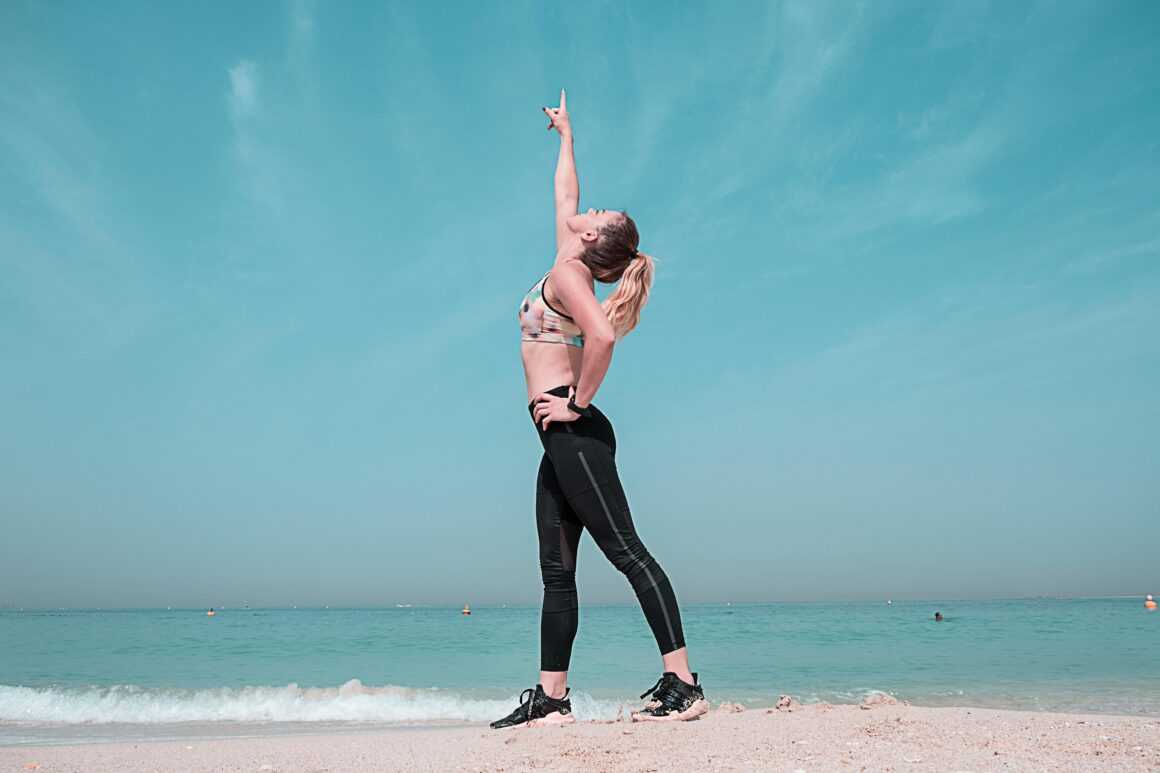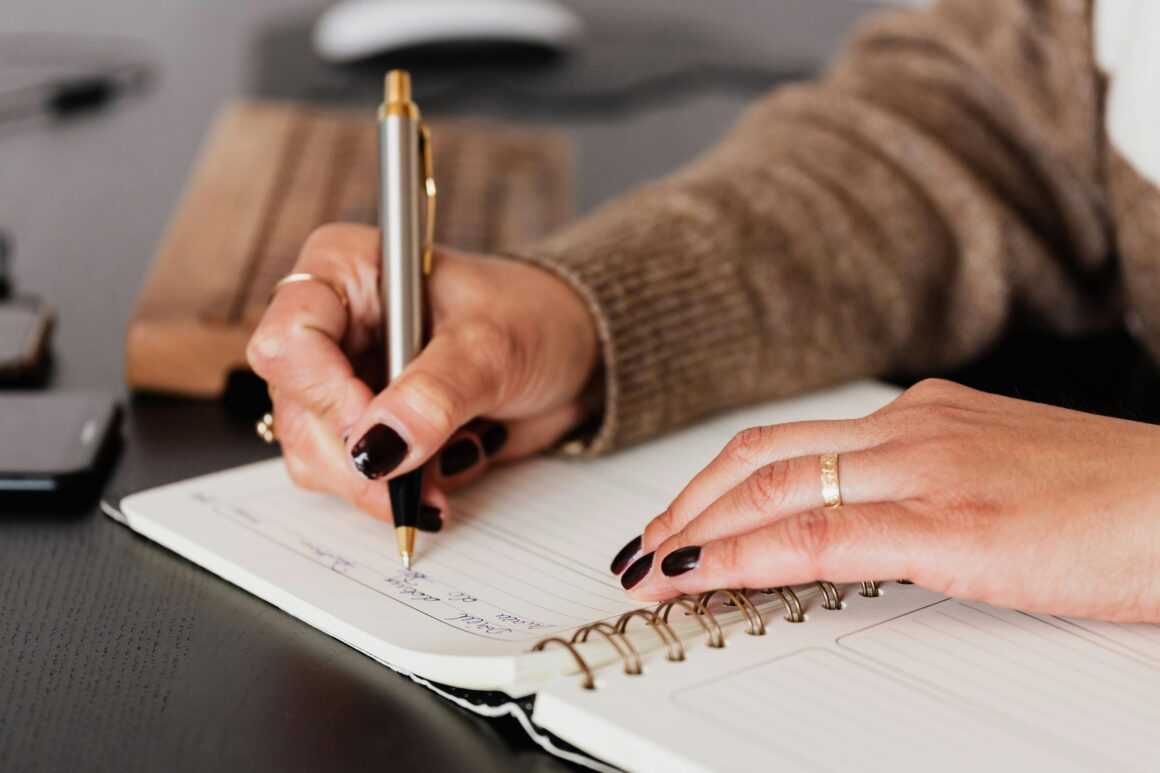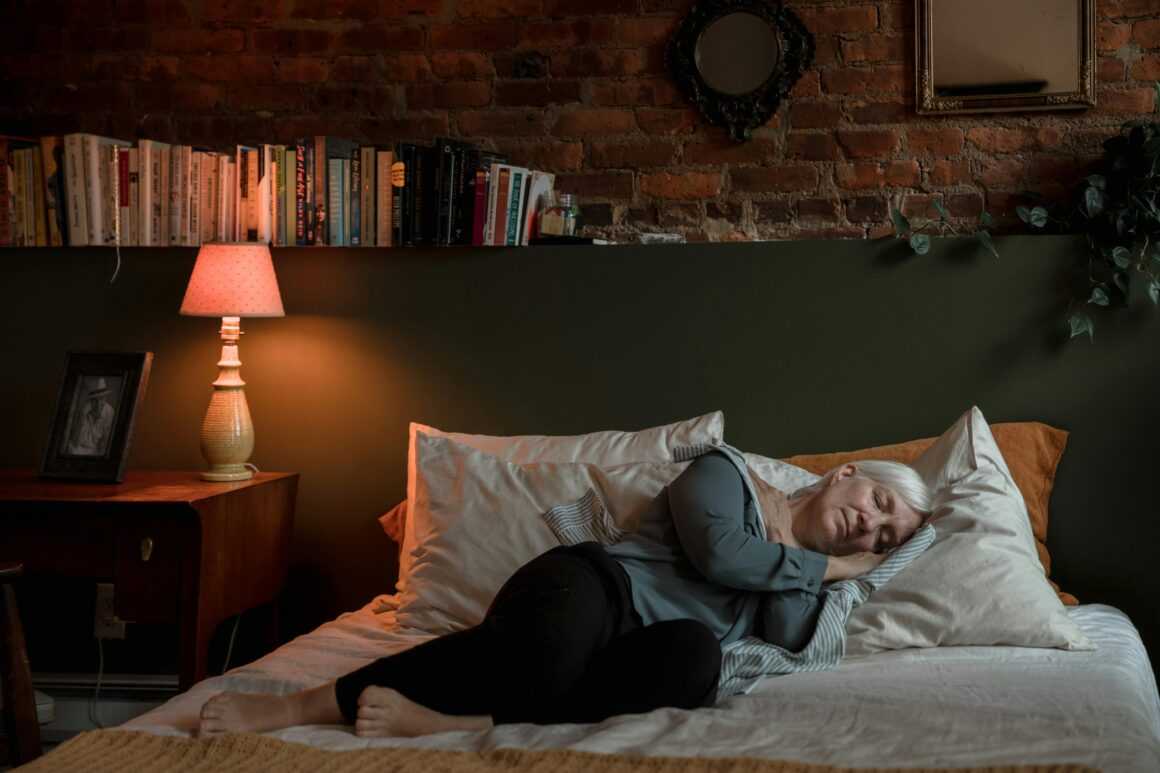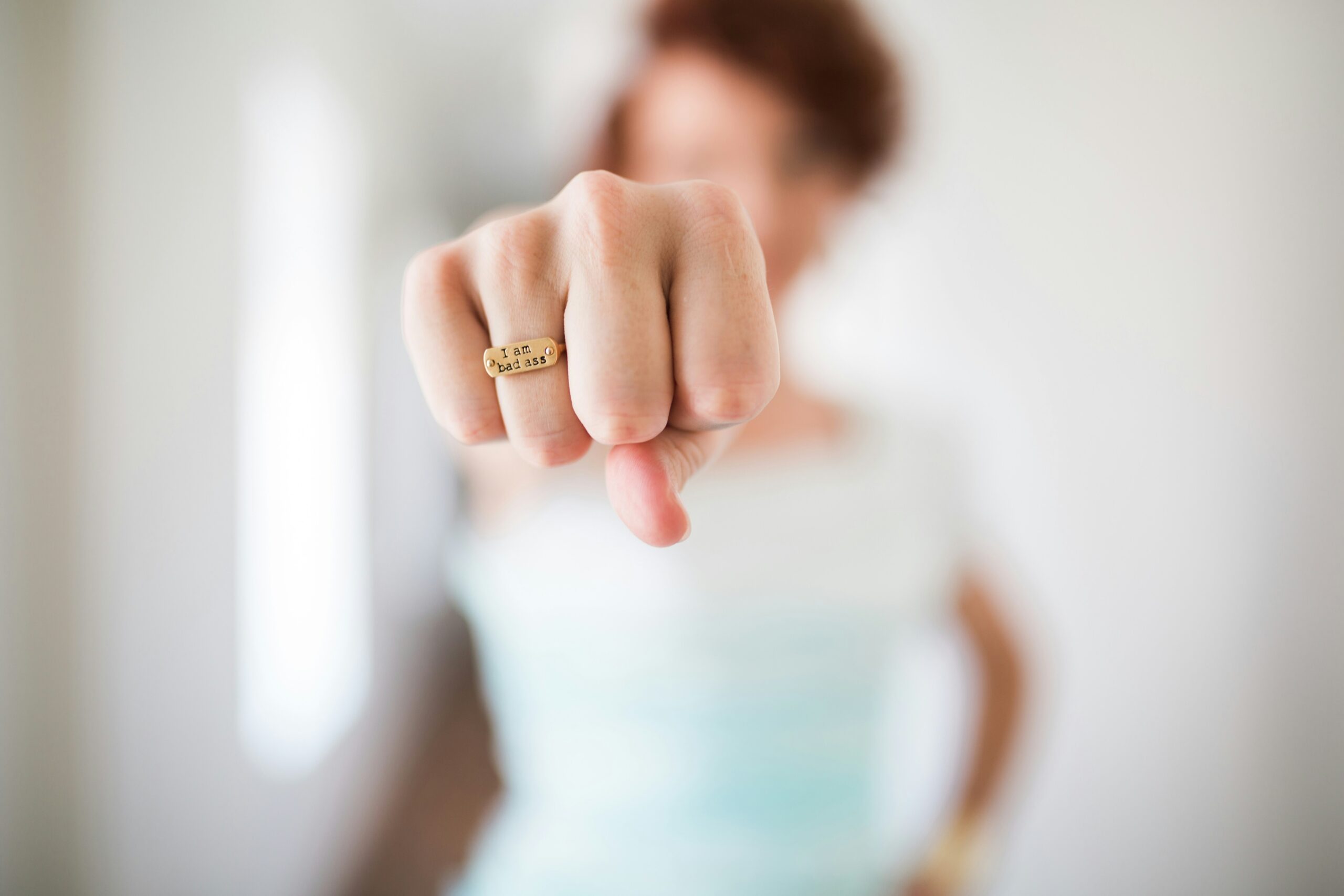Conquer Anxiety and Reclaim Your Confidence: 5 Proven Techniques for Women Leaders

Welcome to our comprehensive guide on conquering anxiety and reclaiming confidence for women leaders. In today’s fast-paced world, anxiety can often feel like an unwelcome companion, but it doesn’t have to define us. This guide is designed to empower women with proven techniques to manage anxiety effectively, restore balance, and unlock their full potential as leaders.
Transitioning seamlessly from the bustling demands of leadership to the tranquility of self-reflection, we embark on a journey of self-discovery, equipped with invaluable insights and actionable strategies. Together, let’s navigate the complexities of anxiety with courage, compassion, and unwavering determination.
Table of Contents
Understanding Anxiety Symptoms in Women: Physical and Mental Signs
Physical Symptoms
Recognizing Physical Signs of Stress
Physical symptoms of stress in women may include increased heart rate, rapid breathing, muscle tension, sweating, trembling, nausea, and gastrointestinal discomfort. Understanding these physical manifestations can help individuals identify when they are experiencing stress.
Understanding the Body’s Response to Pressure
Stress activates the body’s “fight or flight” response, releasing stress hormones such as adrenaline and cortisol. This physiological reaction prepares the body to react to perceived threats, but chronic activation can lead to adverse health effects.
Identifying Common Physical Manifestations
Physical symptoms of stress can vary widely among individuals. Some may experience chest pain or tightness, dizziness, headaches, or fatigue. Recognizing these symptoms can aid in early intervention and management.
Websites and Resources
- Anxiety and Depression Association of America (ADAA): Provides comprehensive information on anxiety disorders, including symptoms, causes, and treatment options.
- Mayo Clinic – Anxiety Disorders: Offers in-depth articles on anxiety symptoms, diagnosis, and management.
- National Institute of Mental Health (NIMH) – Anxiety Disorders: Provides research-based information on anxiety disorders, including symptoms and treatment approaches.
Mental Symptoms
Exploring Mental Signs of Tension
Mental symptoms of tension in women may include excessive worry, irritability, restlessness, difficulty concentrating, and intrusive thoughts. Understanding these cognitive and emotional aspects is crucial for recognizing and addressing tension.
Coping with Intrusive Thoughts
Intrusive thoughts are unwanted, distressing thoughts or images that can exacerbate tension. Techniques such as cognitive restructuring and mindfulness can help individuals manage intrusive thoughts effectively.
Managing Emotional Turmoil
Tension often accompanies intense emotional experiences, such as fear, sadness, or frustration. Developing emotional regulation skills through therapy and self-care practices can help individuals cope with these emotions.
Websites and Resources
- Mind – Understanding Anxiety: Offers articles and resources on understanding anxiety and managing its mental symptoms.
- Anxiety.org – Mental Symptoms of Anxiety: Provides information on various mental symptoms of anxiety and coping strategies.
- Psychology Today – Understanding Anxiety: Features articles and insights into anxiety, its causes, and its effects on mental health.

Insights into Generalized Anxiety Disorder (GAD) in Women: Coping Strategies and Treatment Options
Coping Strategies
Implementing Relaxation Techniques
Relaxation techniques such as deep breathing, progressive muscle relaxation, and guided imagery can help alleviate symptoms of unease associated with GAD. These techniques promote relaxation and reduce the physiological arousal associated with unease.
Developing Healthy Coping Mechanisms
Engaging in healthy coping mechanisms, such as regular exercise, maintaining a balanced diet, getting adequate sleep, and practicing mindfulness, can enhance resilience and reduce the impact of unease symptoms.
Building a Support Network
Establishing a support network of friends, family members, and mental health professionals can provide invaluable emotional support and practical assistance in managing GAD. Support groups and online communities can also offer understanding and encouragement.
Websites and Resources
- American Psychological Association (APA) – Coping with Anxiety: Offers evidence-based strategies for coping with anxiety, including relaxation techniques and stress management.
- HelpGuide – Coping with Anxiety: Provides practical tips and resources for managing anxiety, including lifestyle changes and relaxation techniques.
- National Alliance on Mental Illness (NAMI) – Coping with GAD: Offers information and support for individuals living with GAD, including coping strategies and treatment options.
Treatment Options
Exploring Therapy Modalities
Cognitive-behavioral therapy (CBT), exposure therapy, and acceptance and commitment therapy (ACT) are effective therapeutic approaches for treating GAD. These therapies help individuals identify and challenge maladaptive thought patterns, develop coping skills, and gradually confront unease-provoking situations.
Understanding Medication Options
Antidepressants such as selective serotonin reuptake inhibitors (SSRIs) and serotonin-norepinephrine reuptake inhibitors (SNRIs) are commonly prescribed medications for GAD. Benzodiazepines may be prescribed for short-term relief of severe unease symptoms, but they carry risks of dependency and withdrawal.
Integrating Holistic Approaches
Complementary and alternative treatments such as acupuncture, yoga, meditation, and herbal supplements may complement conventional treatments for GAD. These approaches can promote relaxation, reduce stress, and enhance overall well-being.
Websites and Resources
- Anxiety and Depression Association of America (ADAA) – Treatments for Anxiety Disorders: Provides comprehensive information on treatment options for GAD, including therapy and medication.
- National Institute of Mental Health (NIMH) – Anxiety Treatments: Offers research-based information on treatments for anxiety disorders, including GAD.
- WebMD – Medications for Anxiety: Provides an overview of medications used to treat anxiety disorders, including GAD.

Overcoming Social Anxiety Disorder (SAD) in Women: Strategies for Success in Social Settings
Exposure Techniques
Gradual Exposure Therapy
Gradual exposure to social situations allows individuals to confront feared scenarios in a controlled and systematic manner. This approach helps desensitize individuals to unease-provoking stimuli and build confidence over time.
Practicing Assertive Communication
Learning assertive communication skills can empower women to express their thoughts, feelings, and needs effectively in social interactions. Assertiveness training focuses on advocating for oneself while respecting the rights of others.
Navigating Social Situations
Social skills training provides opportunities for women to learn and practice essential social skills, such as initiating conversations, maintaining eye contact, and interpreting nonverbal cues. Role-playing exercises and group activities can enhance social competence and confidence.
Websites and Resources
- Social Anxiety Institute – Treatment Programs: Offers information on treatment programs for social anxiety disorder, including exposure therapy and social skills training.
- Anxiety Canada – Social Anxiety Resources: Provides resources and support for individuals living with social anxiety disorder, including self-help strategies and online courses.
- Verywell Mind – Exposure Therapy for Social Anxiety: Offers an overview of exposure therapy techniques for social anxiety disorder, including step-by-step guidance.
Support Systems
Building Confidence through Support Groups
Joining support groups for social unease disorder provides a safe and understanding environment where women can share their experiences, receive validation, and learn from others facing similar challenges. Peer support fosters a sense of belonging and reduces feelings of isolation.
Seeking Professional Guidance
Working with a therapist who specializes in treating social unease disorder can provide tailored interventions and support. Therapeutic techniques such as cognitive-behavioral therapy (CBT), group therapy, and exposure therapy can help women address underlying fears and develop coping strategies.
Utilizing Online Resources
Online forums, chat groups, and self-help resources offer additional support and information for individuals living with social unease disorder. Websites, apps, and social media platforms provide opportunities for connection, education, and self-expression.
Websites and Resources
- Social Phobia/Social Anxiety Association – Support Groups: Offers information on support groups for social anxiety disorder and related resources.
- Anxiety and Depression Association of America (ADAA) – Find a Therapist: Provides a directory of licensed therapists specializing in anxiety disorders, including social anxiety disorder.
- BetterHelp – Online Therapy: Offers online therapy services for individuals seeking support for social anxiety disorder and other mental health concerns.

Strategies for Managing Anxiety Attacks in Women: Coping Techniques for Crisis Moments
Grounding Techniques
Focused Breathing
Encouraging slow, deep breaths can help regulate breathing patterns and alleviate symptoms of hyperventilation during a distress attack. Instructing individuals to focus on the sensation of air entering and leaving their lungs can redirect attention away from distressing thoughts.
Utilizing Sensory Stimuli
Engaging the senses through tactile, auditory, or olfactory stimuli can help individuals stay grounded and connected to the present moment. Encouraging individuals to touch textured objects, listen to calming music, or smell soothing scents can provide a sense of stability during a distress attack.
Progressive Muscle Relaxation
Guiding individuals through progressive muscle relaxation exercises can reduce muscle tension and promote relaxation. Encouraging individuals to tense and release different muscle groups sequentially can help release physical tension and induce a state of calm.
Websites and Resources
- National Alliance on Mental Illness (NAMI) – Coping with Panic Attacks: Provides information on coping strategies for panic attacks, including grounding techniques and relaxation exercises.
- Anxiety and Depression Association of America (ADAA) – Panic Attack Resources: Offers resources and support for individuals experiencing panic attacks, including self-help tools and treatment options.
- Mindful – Grounding Techniques: Offers guidance on grounding techniques for managing anxiety and stress, including mindfulness practices and sensory exercises.
Creating a Safety Plan
Identifying Triggers and Warning Signs
Encouraging individuals to identify triggers and warning signs of stress attacks can help them anticipate and prepare for potential episodes. Common triggers may include stressful situations, overwhelming emotions, or specific thoughts or memories.
Establishing Coping Strategies
Collaborating with individuals to develop a personalized toolbox of coping strategies can empower them to manage stress attacks effectively. Encouraging individuals to identify coping techniques that have worked well for them in the past can increase their sense of agency and control.
Seeking Professional Support
Emphasizing the importance of seeking professional help and developing a crisis plan in collaboration with mental health professionals can provide individuals with additional support and resources. Ensuring access to emergency contacts, hotlines, and crisis intervention services can enhance safety and well-being.
Websites and Resources
- American Psychological Association (APA) – Creating a Personalized Safety Plan: Provides guidance on creating a safety plan for managing mental health crises, including anxiety attacks.
- Suicide Prevention Lifeline – Safety Planning: Offers resources and templates for creating a personalized safety plan for individuals experiencing mental health crises.
- Mental Health America (MHA) – Crisis Resources: Provides information on crisis intervention services, including hotlines, chat support, and emergency resources.

Addressing Anxiety and Weight Gain in Women: Understanding the Connection and Managing Health
Understanding the Link between Anxiety and Weight Gain
Exploring Stress-Eating Patterns
Stress can trigger emotional eating behaviors in some individuals, leading to the consumption of high-calorie, comfort foods as a coping mechanism. Chronic stress and tension may contribute to weight gain over time if not addressed.
Examining Hormonal Imbalances
Chronic stress and tension can disrupt hormonal balance in the body, leading to increased levels of cortisol, the stress hormone. Elevated cortisol levels have been associated with increased appetite, cravings for unhealthy foods, and abdominal fat deposition.
Identifying Behavioral Factors
Stress can also influence lifestyle behaviors such as physical activity levels, sleep quality, and meal patterns, which may contribute to weight gain. Individuals experiencing stress may be less likely to engage in regular exercise and may have disrupted sleep patterns, both of which can affect metabolism and weight management.
Websites and Resources
- National Institute of Diabetes and Digestive and Kidney Diseases (NIDDK) – Weight and Emotional Health: Offers information on the link between emotional health and weight, including stress-eating patterns and hormonal influences.
- Harvard Health Publishing – Stress and Weight Gain: Provides insights into how stress contributes to overeating and weight gain, including physiological mechanisms and behavioral factors.
- American Psychological Association (APA) – Stress and Overeating: Offers resources and research on the relationship between stress and overeating, including coping strategies and healthy alternatives.
Managing Anxiety-Related Weight Gain
Implementing Stress-Management Techniques
Engaging in stress-reduction activities such as mindfulness meditation, yoga, deep breathing exercises, and progressive muscle relaxation can help alleviate stress and reduce the likelihood of stress-related overeating.
Adopting Healthy Eating Habits
Encouraging individuals to adopt balanced and nutritious eating habits can support weight management goals while addressing emotional eating patterns. Emphasizing whole foods, fruits, vegetables, lean proteins, and whole grains can provide essential nutrients and promote satiety.
Incorporating Regular Physical Activity
Regular exercise not only helps burn calories and maintain a healthy weight but also reduces stress and improves mood. Encouraging individuals to find enjoyable forms of physical activity, such as walking, swimming, dancing, or cycling, can support overall well-being.
Websites and Resources
- Mayo Clinic – Weight Loss: 6 Strategies for Success: Provides evidence-based strategies for successful weight management, including stress reduction and healthy lifestyle habits.
- Centers for Disease Control and Prevention (CDC) – Physical Activity for a Healthy Weight: Offers guidelines and recommendations for incorporating physical activity into daily life to support weight management and overall health.
- Eatright.org – Stress and Eating Habits: Provides tips and resources for managing stress-related eating habits and maintaining a healthy weight.

Navigating Anxiety and Relationships in Women: Building Healthy Connections
Communication Strategies
Open and Honest Communication
Encouraging open and honest communication with partners, family members, and friends can foster understanding and support. Women experiencing apprehension can express their feelings, needs, and concerns openly, while loved ones can offer empathy, validation, and practical assistance.
Setting Boundaries
Establishing clear boundaries in relationships can help women manage unease and protect their well-being. Setting limits on time spent engaging in stressful activities, asserting personal space and autonomy, and communicating boundaries assertively can enhance relationship dynamics and reduce stress.
Conflict Resolution Skills
Developing effective conflict resolution skills can help women navigate interpersonal conflicts and disagreements without exacerbating unease. Techniques such as active listening, empathy, compromise, and problem-solving can facilitate constructive communication and strengthen relationships.
Websites and Resources
- Psychology Today – Effective Communication Skills: Offers articles and resources on improving communication skills in relationships, including tips for effective listening and expressing emotions.
- Gottman Institute – Building Strong Relationships: Provides research-based insights and tools for strengthening relationships, including communication strategies, conflict resolution techniques, and relationship assessments.
- Talkspace – Online Therapy: Offers online therapy services for individuals seeking support in managing anxiety and improving relationship dynamics.
Emotional Support Systems
Seeking Supportive Relationships
Surrounding oneself with supportive and understanding individuals can provide invaluable emotional support and validation. Cultivating relationships with friends, family members, or support groups who offer empathy, encouragement, and acceptance can buffer against the negative effects of unease.
Building a Support Network
Actively building a support network of trusted individuals who can offer emotional support, practical assistance, and companionship can enhance resilience and well-being. Participating in social activities, joining hobby groups, or volunteering can provide opportunities to connect with like-minded individuals and build meaningful relationships.
Professional Support
Seeking support from mental health professionals, such as therapists or counselors, can provide additional guidance and resources for managing apprehension and relationship issues. Therapy offers a safe and confidential space to explore emotions, develop coping strategies, and improve interpersonal skills.
Websites and Resources
- HealthyPlace – Building a Support System: Provides tips and resources for building a strong support system, including identifying supportive individuals and nurturing relationships.
- Meetup – Find Support Groups: Offers a platform for finding local support groups and social gatherings based on shared interests and experiences.
- National Alliance on Mental Illness (NAMI) – Find Support: Provides resources and support groups for individuals living with mental health conditions, including anxiety disorders.

Managing Anxiety and Sleep Problems in Women: Establishing Healthy Sleep Habits
Understanding the Relationship Between Anxiety and Sleep
Impact of Unease on Sleep Quality
Unease can disrupt sleep patterns, leading to difficulties falling asleep, staying asleep, or experiencing restorative sleep. Persistent worry, racing thoughts, and physical symptoms of unease can interfere with the ability to relax and achieve deep sleep.
Vicious Cycle of Unease and Insomnia
Unease and sleep problems often coexist in a cyclical pattern, where unease contributes to sleep disturbances, and inadequate sleep exacerbates unease symptoms. Breaking this cycle requires addressing both unease and sleep issues simultaneously.
Addressing Underlying Factors
Identifying and addressing underlying factors contributing to unease and sleep problems, such as stress, lifestyle habits, and medical conditions, is essential for improving sleep quality and overall well-being.
Websites and Resources
- National Sleep Foundation – Anxiety and Sleep: Provides information on the relationship between anxiety and sleep, common sleep problems associated with anxiety, and strategies for improving sleep quality.
- Sleep Health Foundation – Sleep and Anxiety Disorders: Offers resources and tips for managing sleep problems related to anxiety disorders, including relaxation techniques and sleep hygiene practices.
- Sleep Education – Anxiety and Insomnia: Provides insights into how anxiety can cause insomnia and tips for managing anxiety-related sleep disturbances.
Promoting Healthy Sleep Hygiene
Establishing a Consistent Sleep Schedule
Maintaining a regular sleep-wake schedule can help regulate the body’s internal clock and improve sleep quality. Going to bed and waking up at the same time each day, even on weekends, can promote better sleep consistency.
Creating a Relaxing Bedtime Routine
Engaging in calming activities before bedtime, such as reading, taking a warm bath, or practicing relaxation exercises, can signal to the body that it’s time to wind down and prepare for sleep. Avoiding stimulating activities or screens close to bedtime can promote relaxation and improve sleep quality.
Optimizing Sleep Environment
Creating a conducive sleep environment can enhance sleep quality and promote restful sleep. Ensuring a comfortable mattress and pillows, controlling noise and light levels, and maintaining a cool, dark, and quiet bedroom environment can support restorative sleep.
Websites and Resources
- National Institute of Neurological Disorders and Stroke (NINDS) – Brain Basics: Understanding Sleep: Offers educational resources on the basics of sleep, including sleep cycles, sleep disorders, and tips for improving sleep hygiene.
- Sleep Foundation – Sleep Hygiene Tips: Provides practical tips and recommendations for improving sleep hygiene, including creating a sleep-friendly environment, establishing bedtime routines, and managing stress.
- Mayo Clinic – Healthy Sleep Habits: Offers evidence-based strategies for promoting healthy sleep habits and improving sleep quality.

Exploring Meditation for Anxiety in Women: Cultivating Calmness and Inner Peace
Understanding Meditation
Overview of Meditation Practices
Meditation encompasses a variety of techniques aimed at calming the mind, enhancing self-awareness, and promoting relaxation. Common meditation practices include mindfulness meditation, guided imagery, loving-kindness meditation, and transcendental meditation.
Benefits for Distress
Research has shown that regular meditation practice can have significant benefits for reducing distress symptoms. Meditation promotes relaxation, reduces physiological arousal, and helps individuals develop a non-reactive awareness of their thoughts and emotions, allowing them to respond to stressors more effectively.
Getting Started with Meditation
Beginners can start with simple meditation practices, such as focused breathing or body scan meditation, and gradually explore different techniques to find what resonates best with them. Consistency and patience are key to developing a meditation practice that yields benefits over time.
Websites and Resources
- Mindful – Getting Started with Meditation: Provides guidance and resources for beginners interested in starting a meditation practice, including tips for finding a comfortable posture and incorporating meditation into daily life.
- Headspace – Meditation Basics: Offers introductory meditation courses and guided meditation sessions for beginners, focusing on mindfulness and relaxation techniques.
- Greater Good Magazine – The Science of Mindfulness: Provides insights into the science behind mindfulness meditation and its benefits for mental health and well-being.
Practicing Meditation Techniques
Mindfulness Meditation
Mindfulness meditation involves paying attention to the present moment with curiosity and non-judgmental awareness. Practitioners observe their thoughts, emotions, and bodily sensations without reacting to them, cultivating a sense of calm and acceptance.
Loving-Kindness Meditation
Loving-kindness meditation involves directing positive intentions and well-wishes toward oneself and others. Practitioners cultivate feelings of compassion, kindness, and goodwill, promoting emotional resilience and enhancing social connections.
Guided Imagery
Guided imagery involves visualizing peaceful and calming scenes or scenarios, such as a serene beach or a tranquil forest. Practitioners use vivid imagery and sensory details to evoke relaxation and reduce stress and apprehension.
Websites and Resources
- Insight Timer – Guided Meditations: Offers a wide selection of guided meditation sessions on various topics, including stress relief, anxiety reduction, and relaxation.
- Calm – Mindfulness Meditation: Provides guided meditation sessions and mindfulness exercises designed to promote relaxation, reduce anxiety, and improve sleep quality.
- Tara Brach – Guided Meditations: Offers free guided meditations led by meditation teacher Tara Brach, focusing on mindfulness, compassion, and emotional healing.

Harnessing Yoga for Anxiety Relief in Women: Integrating Mind, Body, and Breath
Understanding Yoga as a Therapeutic Practice
Holistic Approach to Wellness
Yoga is a mind-body practice that combines physical postures (asanas), breath control (pranayama), and meditation techniques to promote physical, mental, and emotional well-being. By integrating movement, breath, and mindfulness, yoga offers a comprehensive approach to stress reduction and unease relief.
Benefits for Anxiety
Research has shown that yoga can be an effective complementary therapy for reducing unease symptoms and improving overall mental health. Yoga promotes relaxation, reduces physiological arousal, and enhances self-awareness, helping individuals manage stress and unease more effectively.
Accessible to All Levels
Yoga is accessible to individuals of all ages, fitness levels, and abilities. Beginners can start with gentle yoga classes or beginner-friendly sequences and gradually progress to more advanced practices as they build strength, flexibility, and confidence.
Websites and Resources
- Yoga Journal – Beginner’s Guide to Yoga: Offers articles, tutorials, and videos for beginners interested in starting a yoga practice, including tips for selecting classes, choosing equipment, and mastering basic poses.
- Yoga Alliance – Find a Registered Yoga Teacher: Provides a directory of registered yoga teachers and yoga studios worldwide, making it easy to find certified instructors and classes in your area.
- PubMed – Yoga for Anxiety and Depression: Offers research articles and studies on the effectiveness of yoga for anxiety and depression, providing evidence-based insights into its therapeutic benefits.
Incorporating Yoga into Daily Life
Mindful Movement Practices
Practicing yoga asanas (poses) mindfully can help individuals cultivate body awareness, release tension, and reduce stress. Gentle and restorative poses, such as child’s pose, forward folds, and gentle twists, can promote relaxation and calm the nervous system.
Breath-Centered Techniques
Breath-focused practices, such as pranayama (breath control) and mindful breathing, can help individuals regulate their breath and calm the mind. Techniques such as deep belly breathing, alternate nostril breathing, and ujjayi breath can induce a state of relaxation and reduce unease.
Meditation and Mindfulness
Integrating meditation and mindfulness practices into yoga sessions can enhance the mental and emotional benefits of the practice. Mindful awareness of sensations, thoughts, and emotions during yoga can promote present-moment awareness and stress reduction.
Websites and Resources
- DoYogaWithMe – Free Yoga Classes: Offers a wide selection of free yoga classes for all levels, including beginner-friendly sequences, guided meditations, and breathwork exercises.
- Yoga International – Yoga for Anxiety Relief: Provides articles, videos, and courses on using yoga as a tool for managing anxiety and promoting emotional well-being.
- Gaia – Yoga for Stress Relief: Offers yoga classes and programs specifically designed to reduce stress, calm the mind, and soothe anxiety.
Integrating Therapy for Anxiety in Women: Professional Support for Mental Well-being
Understanding Therapy for Anxiety
Role of Therapy
Therapy, such as cognitive-behavioral therapy (CBT), acceptance and commitment therapy (ACT), and psychodynamic therapy, can be highly effective in treating unease disorders. Therapy offers a supportive and confidential space for individuals to explore their thoughts, emotions, and behaviors, identify underlying causes of unease, and develop coping strategies.
Evidence-Based Approaches
Cognitive-behavioral therapy (CBT) is one of the most widely used and researched therapies for unease disorders. CBT helps individuals identify and challenge maladaptive thought patterns, develop coping skills, and gradually confront unease-provoking situations through exposure therapy.
Collaborative Process
Therapy involves a collaborative process between the individual and therapist, where the therapist provides guidance, support, and expertise in helping the individual overcome unease symptoms. Therapy sessions may include discussions, exercises, role-plays, and homework assignments tailored to the individual’s needs.
Websites and Resources
- Psychology Today – Find a Therapist: Offers a directory of licensed therapists specializing in anxiety disorders and other mental health concerns, making it easy to find a qualified therapist in your area.
- National Institute of Mental Health (NIMH) – Psychotherapies: Provides information on different types of psychotherapies used to treat anxiety disorders, including cognitive-behavioral therapy (CBT) and exposure therapy.
- Anxiety and Depression Association of America (ADAA) – Therapy Resources: Offers resources and information on finding a therapist, understanding different therapy approaches, and getting the most out of therapy sessions.
Benefits of Therapy for Anxiety
Symptom Management
Therapy provides individuals with practical tools and strategies for managing unease symptoms, such as excessive worry, panic attacks, and avoidance behaviors. By learning coping skills and relaxation techniques, individuals can regain a sense of control over their unease.
Addressing Underlying Issues
Therapy helps individuals explore the underlying causes of their unease, such as past traumas, negative beliefs, or dysfunctional patterns of thinking and behavior. By gaining insight into these underlying factors, individuals can work towards resolving unresolved issues and healing emotional wounds.
Improving Quality of Life
Therapy can significantly improve the overall quality of life for individuals living with unease. By reducing the impact of unease on daily functioning, relationships, and well-being, therapy empowers individuals to lead fulfilling and meaningful lives.
Websites and Resources
- BetterHelp – Online Therapy: Offers online therapy services for individuals seeking support for anxiety and other mental health concerns. Online therapy provides convenient and accessible access to licensed therapists via video, chat, or phone.
- Talkspace – Therapy for Anxiety: Provides online therapy services for individuals experiencing anxiety, depression, and other mental health challenges. Talkspace offers flexible therapy options and a team of licensed therapists specializing in anxiety disorders.
- National Alliance on Mental Illness (NAMI) – Therapy Resources: Offers resources and information on different types of therapy for anxiety disorders, including individual therapy, group therapy, and specialized treatment programs.

Embracing Mindfulness Exercises for Anxiety in Women: Cultivating Present-Moment Awareness
Understanding Mindfulness
Definition and Principles
Mindfulness involves paying attention to the present moment with openness, curiosity, and acceptance, without judgment. It emphasizes cultivating awareness of one’s thoughts, emotions, bodily sensations, and surroundings, fostering a sense of clarity, calmness, and presence.
Rooted in Meditation Traditions
Mindfulness practices originate from ancient meditation traditions, particularly within Buddhist teachings. However, mindfulness has been adapted and secularized in contemporary contexts, making it accessible and applicable to individuals from diverse backgrounds and belief systems.
Benefits for Unease
Research has demonstrated that mindfulness-based interventions can be effective in reducing symptoms of unease and stress. By promoting non-reactive awareness and equanimity, mindfulness helps individuals develop resilience and cope with challenging emotions and situations.
Websites and Resources
- Mindful.org: Offers articles, guided meditations, and resources on mindfulness practice, including tips for incorporating mindfulness into daily life and managing stress and anxiety.
- The Center for Mindfulness – University of Massachusetts Medical School: Provides information on mindfulness-based programs, research, and training, including the Mindfulness-Based Stress Reduction (MBSR) program developed by Dr. Jon Kabat-Zinn.
Practicing Mindfulness Techniques
Breath Awareness
Breath awareness involves directing attention to the sensations of the breath as it flows in and out of the body. By focusing on the rhythmic pattern of breathing, individuals can anchor themselves in the present moment and calm the mind.
Body Scan Meditation
Body scan meditation involves systematically bringing awareness to different parts of the body, starting from the toes and gradually moving upward. This practice helps individuals release tension, become attuned to bodily sensations, and cultivate a sense of relaxation and presence.
Sensory Awareness
Sensory awareness exercises involve tuning into the five senses—sight, hearing, taste, smell, and touch—and fully experiencing the present moment through sensory perception. Engaging in sensory activities such as mindful eating, nature walks, or listening to calming music can promote relaxation and reduce unease.
Websites and Resources
- Greater Good in Action – Mindfulness Exercises: Offers a collection of mindfulness exercises and guided meditations for reducing stress, improving focus, and enhancing emotional well-being.
- Headspace – Mindfulness for Anxiety: Provides guided meditations and mindfulness exercises specifically designed to help individuals manage anxiety and cultivate a sense of calm and balance.
- The Mindfulness Initiative – Resources: Offers resources, research, and toolkits on mindfulness-based interventions for mental health, including anxiety disorders and stress management.

Utilizing Breathing Exercises for Anxiety in Women: Harnessing the Power of Breath
Understanding the Role of Breath in Anxiety
Connection Between Breath and Emotions
Breath is intimately connected to our emotional state, with changes in breathing patterns often reflecting shifts in mood and stress levels. During periods of unease, breathing may become shallow, rapid, or irregular, exacerbating feelings of tension and discomfort.
Impact on the Nervous System
Breathing exercises can directly influence the autonomic nervous system, which regulates involuntary bodily functions such as heart rate, blood pressure, and stress response. By consciously modifying breathing patterns, individuals can activate the body’s relaxation response and promote a sense of calm.
Benefits of Conscious Breathing
Conscious breathing exercises, such as diaphragmatic breathing and paced breathing, help individuals regulate their breath, reduce physiological arousal, and induce a state of relaxation. These techniques are simple, accessible, and can be practiced anytime, anywhere, making them effective tools for managing unease.
Websites and Resources
- American Psychological Association (APA) – Breathing Exercises for Stress: Provides information on the science behind breathing exercises, their benefits for stress reduction, and practical tips for incorporating them into daily life.
- Breathwrk – Breathing Exercises App: Offers a mobile app with guided breathing exercises tailored to specific goals, including stress relief, relaxation, and improving sleep quality.
Practicing Breathing Techniques
Diaphragmatic Breathing
Also known as deep belly breathing, diaphragmatic breathing involves breathing deeply into the abdomen, allowing the diaphragm to fully expand and contract. This technique promotes relaxation, reduces tension in the body, and calms the mind.
Paced Breathing
Paced breathing involves breathing at a controlled and rhythmic pace, typically with equal durations for inhalation, exhalation, and pauses between breaths. This technique helps regulate the breath and activate the body’s relaxation response, promoting a sense of calm and balance.
Box Breathing
Box breathing, also referred to as square breathing, involves inhaling, holding the breath, exhaling, and holding the breath again, each for equal counts of time (e.g., inhale for 4 counts, hold for 4 counts, exhale for 4 counts, hold for 4 counts). This technique encourages deep relaxation and mental clarity.
Websites and Resources
- Healthline – Breathing Exercises for Anxiety: Provides step-by-step instructions for various breathing exercises, including diaphragmatic breathing, paced breathing, and box breathing, along with their benefits for anxiety relief.
- Verywell Mind – Breathing Techniques for Stress Relief: Offers guided breathing exercises and audio recordings for stress relief, relaxation, and mindfulness.

Embracing Journaling for Anxiety in Women: Unleashing the Power of Self-Expression
Understanding the Therapeutic Benefits of Journaling
Self-Reflection and Expression
Journaling provides a safe and private space for individuals to express their thoughts, emotions, and experiences without judgment. Through the act of writing, individuals can gain clarity, insight, and perspective on their apprehension symptoms and underlying concerns.
Emotional Processing
Writing about one’s feelings and experiences can facilitate emotional processing and release, allowing individuals to acknowledge and validate their emotions. Journaling helps individuals identify triggers, patterns, and coping strategies related to their worry, empowering them to manage their symptoms more effectively.
Stress Reduction
Engaging in regular journaling practice has been shown to reduce stress levels and promote emotional well-being. By externalizing their thoughts and worries onto paper, individuals can declutter the mind, alleviate rumination, and experience a sense of relief and relaxation.
Websites and Resources
- Psychology Today – The Power of Journaling: Offers insights into the therapeutic benefits of journaling, including stress reduction, self-expression, and emotional processing.
- The Center for Journal Therapy: Provides resources, workshops, and training programs on therapeutic journaling techniques, including prompts, exercises, and group facilitation.
Practicing Journaling Techniques
Freewriting
Freewriting involves setting aside a designated period of time, typically 10-15 minutes, to write continuously without pausing or censoring oneself. The goal is to let thoughts flow freely onto the page, allowing for spontaneous expression and exploration of thoughts and feelings.
Prompts and Reflections
Journaling prompts are thought-provoking questions or statements designed to stimulate self-reflection and exploration. Examples of prompts for apprehension journaling include “What triggers my unease?” “How does unease affect my daily life?” and “What coping strategies have helped me manage unease in the past?
Gratitude Journaling
Gratitude journaling involves writing down things that one is grateful for on a regular basis, such as daily or weekly. This practice helps shift focus from negative thoughts and worries to positive aspects of life, fostering a sense of appreciation, contentment, and resilience.
Websites and Resources
- Tiny Buddha – Journaling Prompts: Offers a collection of journaling prompts for self-discovery, personal growth, and emotional healing, including prompts related to anxiety, mindfulness, and gratitude.
- The Muse – How to Start a Journaling Habit: Provides practical tips and strategies for starting and maintaining a journaling habit, including setting goals, choosing the right journaling format, and overcoming common obstacles.

Exploring Mobile Apps for Anxiety in Women: Accessible Tools for Self-Care
Role of Mobile Apps in Mental Health
Accessibility and Convenience
Mobile apps offer convenient access to mental health resources and tools anytime, anywhere, using smartphones or tablets. With a wide range of apps available, individuals can find options that suit their preferences, needs, and goals for unease management.
Diverse Features and Functions
Mental health apps offer a variety of features and functions, including guided meditations, breathing exercises, mood tracking, journaling prompts, psychoeducation, and relaxation techniques. These tools empower individuals to take an active role in their mental well-being and develop personalized self-care routines.
Evidence-Based Content
Many mental health apps are developed in collaboration with mental health professionals and researchers, incorporating evidence-based techniques and interventions. While not a substitute for professional treatment, these apps can complement therapy and provide additional support for unease management.
Websites and Resources
- American Psychiatric Association (APA) – Mental Health Apps: Provides guidance on selecting mental health apps, including considerations for privacy, security, usability, and evidence-based content.
- National Institute of Mental Health (NIMH) – Mobile Apps: Offers resources and recommendations for mental health apps, including those for anxiety, depression, stress, and mindfulness.
Top Mobile Apps for Anxiety
Headspace
Headspace offers guided meditation and mindfulness exercises designed to reduce stress, improve sleep, and enhance overall well-being. The app features themed meditation sessions for unease, stress, sleep, and personal growth, along with sleep sounds and music tracks for relaxation.
Calm
Calm provides guided meditations, breathing exercises, sleep stories, and relaxing music to promote relaxation and reduce unease. The app offers programs tailored to specific goals, such as unease relief, stress management, and mindfulness for daily life.
Sanvello
Formerly known as Pacifica, Sanvello offers tools and resources for managing stress, unease, and depression. The app features mood tracking, guided meditations, cognitive-behavioral therapy (CBT) exercises, and peer support groups to help individuals build resilience and improve emotional well-being.
Websites and Resources
- Mindful – Best Meditation Apps: Offers reviews and recommendations for the best meditation apps, including those for anxiety relief, stress reduction, and mindfulness practice.
- Healthline – Best Anxiety Apps: Provides a curated list of the best anxiety apps for managing symptoms, tracking moods, and accessing support resources.

Enhancing Sleep Quality for Anxiety in Women: Strategies for Restorative Rest
Understanding the Link Between Anxiety and Sleep
Bidirectional Relationship
Anxiety and sleep disturbances often coexist and influence each other in a bidirectional relationship. Anxiety can disrupt sleep onset, duration, and quality, leading to insomnia, restless sleep, and frequent awakenings. Conversely, inadequate or poor-quality sleep can exacerbate anxiety symptoms, creating a cycle of sleeplessness and heightened anxiety.
Impact on Mental Well-being
Sleep plays a crucial role in regulating emotions, cognitive function, and stress resilience. Chronic sleep deprivation or poor sleep quality can impair mood regulation, increase sensitivity to stressors, and exacerbate anxiety symptoms. Prioritizing restorative sleep is essential for managing anxiety and promoting overall mental well-being.
Websites and Resources
- National Sleep Foundation – Anxiety and Sleep: Provides information on the relationship between anxiety and sleep, common sleep disturbances associated with anxiety, and strategies for improving sleep quality.
- National Institute of Mental Health (NIMH) – Sleep Disorders: Offers resources and research updates on sleep disorders, including insomnia, sleep apnea, and restless legs syndrome.
Implementing Sleep Hygiene Practices
Establishing a Consistent Sleep Schedule
Maintaining a regular sleep-wake schedule helps regulate the body’s internal clock and promote restorative sleep. Women can benefit from setting consistent bedtimes and wake-up times, even on weekends, to synchronize their sleep cycles and improve sleep quality.
Creating a Relaxing Bedtime Routine
Engaging in relaxing activities before bedtime can help signal to the body that it’s time to wind down and prepare for sleep. Women can incorporate calming rituals such as reading, taking a warm bath, practicing gentle yoga or meditation, or listening to soothing music to promote relaxation and reduce anxiety before bed.
Optimizing Sleep Environment
Creating a comfortable and conducive sleep environment can enhance sleep quality and reduce disturbances. Women can optimize their bedroom for sleep by keeping it cool, dark, and quiet, investing in a supportive mattress and pillows, and minimizing electronic devices and distractions that may disrupt sleep.
Websites and Resources
- Sleep Education – Sleep Hygiene Tips: Offers practical tips and recommendations for improving sleep hygiene, including maintaining a comfortable sleep environment, establishing a bedtime routine, and managing stress and anxiety before bed.
- Harvard Health Publishing – Healthy Sleep Habits: Provides evidence-based strategies for improving sleep quality, including sleep hygiene practices, relaxation techniques, and cognitive-behavioral interventions for insomnia.

Exploring the Relationship Between Anxiety and Weight Gain in Women: Strategies for Balanced Health
Understanding the Link Between Anxiety and Weight Gain
Biological and Psychological Factors
The relationship between anxiety and weight gain is complex and influenced by a combination of biological, psychological, and behavioral factors. Chronic stress and anxiety can trigger physiological responses in the body, such as increased cortisol levels and changes in appetite regulation, which may contribute to weight gain over time.
Emotional Eating
Anxiety can lead to emotional eating behaviors, where individuals use food as a coping mechanism to soothe stress, alleviate negative emotions, or distract from anxiety symptoms. Emotional eating often involves consuming high-calorie, comfort foods in response to emotional triggers, leading to excess calorie intake and weight gain.
Impact on Lifestyle Habits
Anxiety can disrupt healthy lifestyle habits, such as regular exercise, balanced nutrition, and adequate sleep, which are essential for weight management and overall health. Individuals experiencing anxiety may engage in sedentary behaviors, irregular eating patterns, or binge eating episodes, which can contribute to weight gain and metabolic imbalances.
Websites and Resources
- National Institute of Diabetes and Digestive and Kidney Diseases (NIDDK) – Weight and Wellness: Provides information on weight management, including tips for maintaining a healthy weight, strategies for healthy eating, and resources for physical activity and exercise.
- Mayo Clinic – Stress and Weight Gain: Offers insights into the relationship between stress, anxiety, and weight gain, along with strategies for managing stress-related eating behaviors.
Strategies for Managing Anxiety-Related Weight Gain
Mindful Eating
Practicing mindful eating involves paying attention to hunger and fullness cues, savoring each bite, and being present with the sensory experience of eating. By cultivating awareness and attunement to physical hunger and satiety signals, women can reduce emotional eating episodes and make more balanced food choices.
Stress Management Techniques
Engaging in stress management techniques such as relaxation exercises, meditation, deep breathing, or yoga can help reduce anxiety levels and mitigate stress-related eating behaviors. By addressing underlying stressors and coping with anxiety in healthier ways, women can minimize the risk of weight gain.
Healthy Coping Strategies
Developing alternative coping strategies for managing anxiety can help women avoid relying on food as a primary source of comfort or distraction. Engaging in activities such as physical exercise, creative expression, social connection, or relaxation can provide healthy outlets for stress relief and emotional regulation.
Websites and Resources
- Academy of Nutrition and Dietetics – Mindful Eating: Provides information on mindful eating practices, including tips for incorporating mindfulness into meals, reducing emotional eating, and fostering a healthier relationship with food.
- HelpGuide – Stress Management: Offers resources and strategies for managing stress, including relaxation techniques, lifestyle changes, and coping skills for reducing anxiety-related eating behaviors.

Frequently Asked Questions
- What are the common symptoms of anxiety in women?
- Anxiety can manifest in various ways, including persistent worry, restlessness, irritability, and difficulty concentrating. Recognizing these symptoms is the first step towards seeking support and finding relief.
- How can anxiety affect women’s relationships and personal life?
- Anxiety can strain relationships and hinder personal well-being by causing communication challenges and increasing feelings of isolation. Understanding these impacts can help women navigate their relationships more effectively.
- What are some natural remedies for managing anxiety?
- Natural remedies such as mindfulness meditation, deep breathing exercises, and lifestyle modifications offer holistic approaches to alleviate anxiety symptoms. Integrating these practices into daily life can promote overall well-being.
- Can anxiety lead to weight gain in women?
- Chronic stress and anxiety may disrupt hormone levels, contributing to weight gain. Additionally, emotional eating behaviors stemming from anxiety can also impact weight. Exploring these connections can help women adopt healthier habits.
- What role does therapy play in treating anxiety for women?
- Therapy, including cognitive-behavioral approaches, provides a supportive environment for women to address anxiety-related challenges. It offers valuable tools and coping strategies to navigate stressors effectively.
- Are there specific mindfulness exercises tailored for women?
- Mindfulness practices tailored for women, such as body scan meditations and self-compassion exercises, offer unique perspectives on managing stress and enhancing well-being. These exercises foster a deeper connection with oneself.
- How does sleep quality impact anxiety levels in women?
- Prioritizing restorative sleep is crucial for managing anxiety, as poor sleep quality can exacerbate symptoms. Understanding the bidirectional relationship between sleep and anxiety empowers women to adopt healthy sleep habits.
- What are some effective breathing exercises for anxiety?
- Breathing exercises, such as diaphragmatic breathing and paced breathing, offer simple yet powerful tools to regulate the body’s stress response and promote relaxation. Integrating these techniques into daily life can alleviate anxiety symptoms.
- How can mobile apps help women manage anxiety?
- Mobile apps offer convenient access to tools and resources for managing anxiety, including guided meditations and stress tracking features. Exploring these apps empowers women to prioritize their mental well-being on the go.
- What strategies can women implement to prevent emotional eating during times of stress?
- Women can practice mindful eating, identify emotional triggers for overeating, and develop alternative coping strategies to manage stress effectively. Building awareness around emotional eating behaviors is key to fostering healthier habits.
As we conclude our transformative journey, let us reflect on the profound insights gained and the strides taken toward personal empowerment and growth. Through the depths of anxiety and uncertainty, we have emerged not as victims but as victors, armed with resilience, wisdom, and unwavering determination.
Transitioning from self-discovery to empowerment, let us carry forth the lessons learned and the bonds forged in solidarity. With hearts ablaze with determination, let us step boldly into the future, knowing that the best is yet to come.








